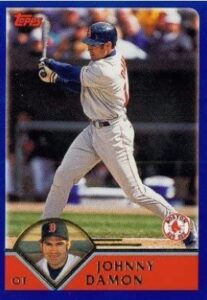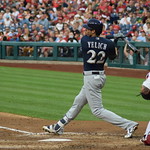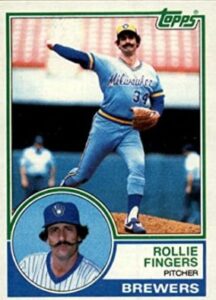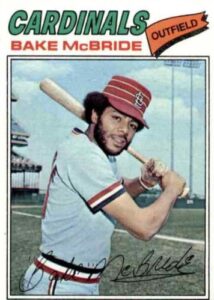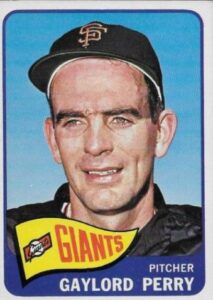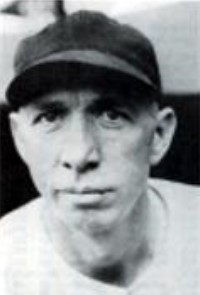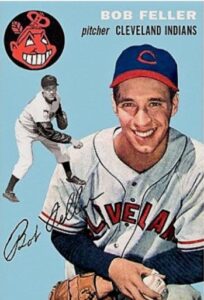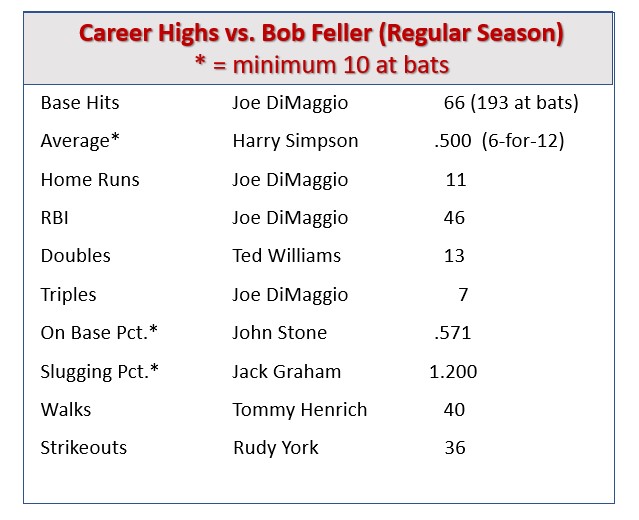As I look “forward” to the late-July start of the 2020 baseball season (although I must admit the recent Covid resurgence and spate of “positives” among players has me worried), I am passing the time by looking “backward” at significant (at least in my view) MLB events from the past. Today’s homage to the past is triggered by a Los Angeles Angels (of Anaheim)-Los Angeles Dodger matchup that took place on this date (June 28) in 2008.
The Dodgers’ 1-0 win that day marked the fifth (and most recent) time in MLB history that a team has come away with a victory without the benefit of a single base hit.
Let’s take a look at those contests.
Angels 0 – Dodgers 1 … Dodger Stadium, June 28, 2008
In this game, the Dodgers were no-hit by losing pitcher Jered Weaver (six innings, three walks, six strikeouts, one unearned run) and Jose Arredondo (two perfect frames with three strikeouts). The Dodgers scored their lone run in the bottom of the fifth. CF Matt Kemp led off and reached on an error by Weaver (bobbling a weak ground ball between home plate and the mound). Two pitches later, with 3B Blake DeWitt at the plate, Kemp stole second and advanced to third on a throwing error by Angels’ catcher Jeff Mathis. DeWitt, with a 1-1 count, then hit a sacrifice fly to deep right – and that was all the scoring for the day. So, in a sequence of four pitches, the game was lost.
Weaver, of course, was credited with the defeat. The win went to Dodgers’ starter Chad Billingsley, who went seven innings and gave up three hits and three walks, while fanning seven. He got relief help from Jonathan Broxton (hold) and Takashi Sato (save). Side note: The Angels did not record an “official” MLB no-hitter, since the Dodgers did not bat in the bottom of the ninth (an official no-hitter must go at least nine innings).
Red Sox 1 – Indians 2… Cleveland Stadium, April 12, 1992
While the Indians failed to get a hit over eight innings against Red Sox’ starter Matt Young, they scored in their very first inning – in fact, within the first three hitters. It started with four-pitch walk to the leadoff hitter, speedy center fielder Kenny Lofton. Lofton stole second while the number two hitter – Glenallen Hill – was at the plate. Hill ran the count to 3-2 and, as he went down swinging, Lofton swiped third. The next hit hitter was 2B Carlos Baerga, who reached first on an error (bad throw) by Red Sox’ SS Luis Rivera, allowing Lofton to score.
The Indians plated an insurance run in the third – and a four-pitch walk again played a role. Indians SS and number-nine hitter Mark Lewis led off and drew a four-pitch walk off Young. Lofton then walked on five pitches, sending Lewis to second. Hill then grounded to short, forcing Lofton, but reaching first on a fielder’s choice. Hill stole second, while Baerga was at the plate. Then, Lewis scored on a Baerga grounder to short.
The Red Sox came back with a run in the top of the fourth, on a walk and two singles, but it was not enough.
Matt Young took the loss (a complete-game) tossing eight innings of no-hit ball (seven walks and six strikeouts) and giving up two unearned runs. Indians’ starter Charles Nagy got the win – giving up eight hits and one run (four walks, ten whiffs) over seven innings, with help from Brad Arnsberg (hold) and Derek Lilliquist (save). As in the June 28, 2008, Angels-Dodgers game, a no-hitter was not credited, since the Indians did not bat in the bottom of the ninth. (Personally, I think that rule needs a look.)
Yankees 0 – White Sox 4 … July 1, 1990 at (old) Comiskey Park
In this one, Yankee starter Andy Hawkins and White Sox starter Greg Hibbard were locked in a scoreless pitching duel after seven frames. Hibbard had given up just four hits (no walks, four strikeouts), while Hawkins was working on a no-hitter (three walks, three whiffs). Barry Jones relieved Hubbard in the top of the eight and held New York scoreless. In the bottom of the inning, Hawkins retired the first two batters on easy pop flies. Then it all unraveled. RF Sammy Sosa (hitting in the number-eight spot) reached on error by 3B Mike Blowers and stole second with SS Ozzie Guillen at the plate. Guillen then walked on a 3-2 pitch and CF Lance Johnson followed with a four-pitch walk. Bases loaded with two out – still no hits.
Robin Ventura then appeared to fly out to left, but the ball hit off of left fielder Jim Leyritz’ glove and rolled away, while all three runners scored. Next up was DH Ivan Calderon, who flied to right. This time, the ball popped out of RF Jesse Barfield’s glove and a fourth run scored. Hawkins got the next batter (LF Dan Pasqua) on a pop up, by the damage was done and the game was gone.
Hawkins took the loss – an eight-inning, complete game (five walks, three hits, four unearned runs), The win went to reliever Barry Jones (who pitched the top of the eighth). Scott Radinsky pitched the ninth for Chicago. Hawkins not only did not get the win, he was not credited with a no-hitter, having pitched just eight innings.
We Interrupt this Post for a Brief Diversion
On this Date (April 22) in 1959, the Chicago White Sox completed what may be the weirdest MLB offensive inning ever – and while it was not a no-hit inning – it was close. In the seventh inning of a 20-6 road win over the Kansas City A’s, the Chicago White Sox scored 11 runs on just one base hit. In fact, they got only one ball out of the infield. In that inning:
- The Sox sent 17 batters to the plate, but collected just one hit – and, in fact, got only one ball out of the infield.
- Sox’ hitters stepped into the box with runners in scoring position 14 times.
- Sox hitters batted with the bases loaded 12 times and never got the ball past the pitcher.
- Eight different White Sox’ players drew walks.
- The Sox drew eight bases-loaded walks (and had one bases-loaded hit batsman). and
- White Sox 2B Nellie Fox walked twice with the bases loaded in the inning.
Here’s how it went that inning (per baseball-reference.com):
- 1B Ray Boone is safe on a throwing error by A’s shortstop Joe DeMaestri.
- RF Al Smith attempts to sacrifice Boone to second (score was 8-6 at the time) and reaches safely on an error by A’s third baseman Hal Smith.
- LF Johnny Callison singles to right. Scoring Boone and Smith (with the help of an error by A’s right fielder Roger Maris). Callison ends up on third.
- SS Louis Aparicio walks – steals second (runners now on second and third).
- P Bob Shaw walks (loading the bases).
- PH Earl Torgeson (batting for 3B Sammy Esposito) walks (scoring Callison).
- 2B Nellie Fox walks (scoring Aparicio).
- CF Jim Landis reaches on fielder’s choice – grounding back to pitcher Mark Freeman, who takes the force at home (bases still loaded).
- C Sherman Lollar walks (scoring Torgeson, bases still loaded).
- Ray Boone makes his second plate appearance of the inning and walks (scoring Nellie Fox).
- Al Smith makes his second plate appearance of the inning and walks (scoring Landis).
- Johnny Callison, who had the only hit of the inning in his first plate appearance, is hit by a pitch (scoring Lollar, bases still loaded). Lou Skizas comes in to run for Callison.)
- Louis Aparicio draws his second walk of the inning (scoring Boone, bases still loaded).
- Bob Shaw strikes out.
- PH Bubba Phillips (batting for Torgeson, who batted for Esposito earlier in the inning) walks (scoring Smith, bases still full).
- Nellie Fox draws his second bases loaded walk of the inning (scoring Skizas).
- Jim Landis grounds out pitcher to first to end the inning.
Now, back to our regularly scheduled posting – victories without the benefit of a hit.
Tigers 2 – Orioles 1 … April 30, 1967 at Memorial Stadium
 This Tigers-Orioles contest was scoreless through seven innings, with the Orioles’ Steve Barber tossing a no-hitter and the Tigers’ Earl Wilson having surrendered just two hits. Still, it did appear Wilson had the better stuff that day. He had given up just one walk, while fanning four. Barber, despite having a no-hitter in the works, had walked five batters and hit two (three strikeouts). In the top of eighth, Barber walked two more (one intentional), but escaped without damage – no-hitter and shutout intact.
This Tigers-Orioles contest was scoreless through seven innings, with the Orioles’ Steve Barber tossing a no-hitter and the Tigers’ Earl Wilson having surrendered just two hits. Still, it did appear Wilson had the better stuff that day. He had given up just one walk, while fanning four. Barber, despite having a no-hitter in the works, had walked five batters and hit two (three strikeouts). In the top of eighth, Barber walked two more (one intentional), but escaped without damage – no-hitter and shutout intact.
In the bottom of the inning, the Orioles finally broke through against Wilson, ironically, without the benefit of a hit – as Wilson seemed to “lose the plate”. LF Curt Blefary led off with a walk and was sacrificed to second by 2B Woodie Held. Charlie Laue then pinch hit for catcher Andy Etchebarren and was intentionally walked to put the double play on the table. Wilson, still struggling, walked Barber to load the bases and Orioles’ SS Luis Aparicio got him home with a sacrifice fly to right. Barber was now going into the top of the ninth with a no-hitter and a 1-0 lead. (But, remember, he had already walked seven and hit two batters). Barber started the inning by walking 1B Norm Cash (who was replaced on the bases by pinch runner Dick Tracewski). Barber then walked SS Roy Oyler, bringing up Wilson, who sacrificed the pair of runners to second and third. Barber than got dangerous PH Willie Horton on a foul pop. He was now just one out away from a no-hit win. Oops! Tracewski came into score on a wild pitch. Then Barber walked CF Mickey Stanley and Orioles’ manager Hank Bauer brought in Stu Miller, who got the final out of the inning. Holding a one-run lead, Tiger manager Mayo Smith brought in Fred Gladding, who pitched a 1-2-3 ninth to save the win for Wilson.
The game, by the way, went in the books as an official (combined) no-hitter – be it a wild one, as Steve Barber walked ten, hit two and threw a wild pitch), while twirling 8 2/3 no-hit innings and losing the game.
Reds 1 – Colt .45s 0 … April 23, 1964
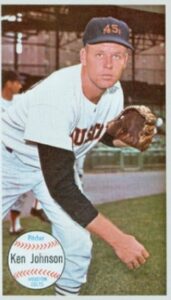 This contest went into the ninth inning tied at zero, with the Reds’ Joe Nuxhall having given up five hits (one walk, four strikeouts) and the Colt .45s’ Ken Johnson working on a brilliant no-hitter (two walks, nine whiffs). In the top of the ninth, errors robbed Johnson of a victory, but not of a complete-game no-hitter. Johnson got Nuxhall on a grounder to third to open the inning. Next 2B Pete Rose attempted to bunt for a hit and reached on a throwing error by Johnson (Rose went to second on the play). Third baseman Chico Ruiz then grounded out, with Rose moving to third. With two-out and the shutout and no-hitter still intact, CF Vada Pinson grounded to second, but reached on an error by Nellie Fox, allowing Rose to score. Johnson got RF Frank Robinson for the final out of the inning, but the damage was done. Nuxhall, pitched a scoreless ninth and Johnson had a no-hitter (two walks, nine strikeouts) and a loss.
This contest went into the ninth inning tied at zero, with the Reds’ Joe Nuxhall having given up five hits (one walk, four strikeouts) and the Colt .45s’ Ken Johnson working on a brilliant no-hitter (two walks, nine whiffs). In the top of the ninth, errors robbed Johnson of a victory, but not of a complete-game no-hitter. Johnson got Nuxhall on a grounder to third to open the inning. Next 2B Pete Rose attempted to bunt for a hit and reached on a throwing error by Johnson (Rose went to second on the play). Third baseman Chico Ruiz then grounded out, with Rose moving to third. With two-out and the shutout and no-hitter still intact, CF Vada Pinson grounded to second, but reached on an error by Nellie Fox, allowing Rose to score. Johnson got RF Frank Robinson for the final out of the inning, but the damage was done. Nuxhall, pitched a scoreless ninth and Johnson had a no-hitter (two walks, nine strikeouts) and a loss.
Ken Johnson is the only MLB pitcher to throw a complete-game, official MLB no-hitter and lose.
Primary Resources: MLB.com; Baseball-Reference.com
BASEBALL ROUNDTABLE ON THE TOP 100 BASEBALL BLOG LIST
 Baseball Roundtable is on the Feedspot list of the Top 100 Baseball Blogs. To see the full list, click here.
Baseball Roundtable is on the Feedspot list of the Top 100 Baseball Blogs. To see the full list, click here.
I tweet baseball @DavidBBRT
Follow/Like Baseball Roundtable’s Facebook Page here. More baseball commentary; blog post notifications; PRIZES.
Member: Society for American Baseball Research (SABR); The Baseball Reliquary; The Negro Leagues Baseball Museum.
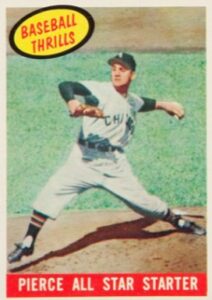
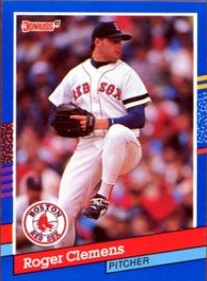
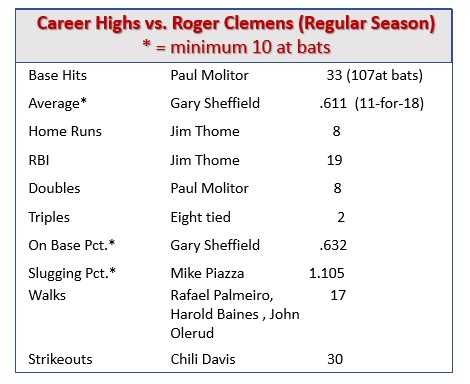











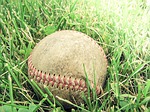 As we all (not-so) patiently wait for “Baseball 2020,” we have time to reflect on things from our “hardball past.” With that in mind, Baseball Roundtable would like to celebrate (and revisit) the 20th Anniversary of MLB’s fastest-ever cycle (single, double, triple, home run in the same game).
As we all (not-so) patiently wait for “Baseball 2020,” we have time to reflect on things from our “hardball past.” With that in mind, Baseball Roundtable would like to celebrate (and revisit) the 20th Anniversary of MLB’s fastest-ever cycle (single, double, triple, home run in the same game).